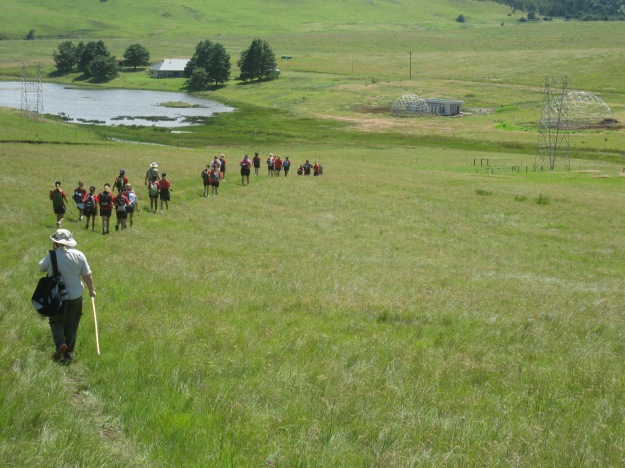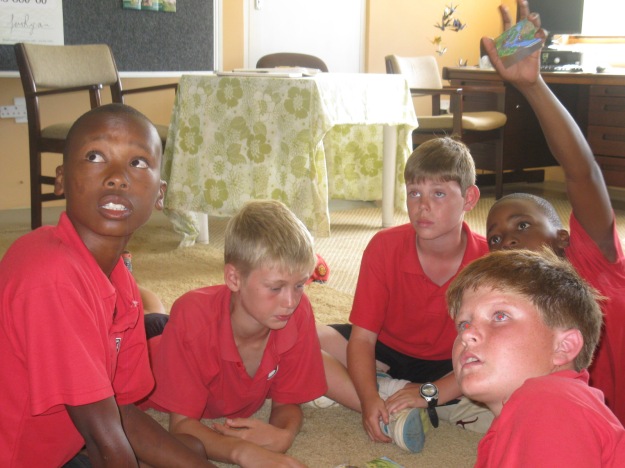Three groups of Grade 7 learners from Clifton Prep School visited the KZN Crane Foundation recently to learn about cranes and explore the Bill Barnes Crane and Oribi Reserve. Nkanyiso Ndlela and Warwick Fraser were there to welcome them. 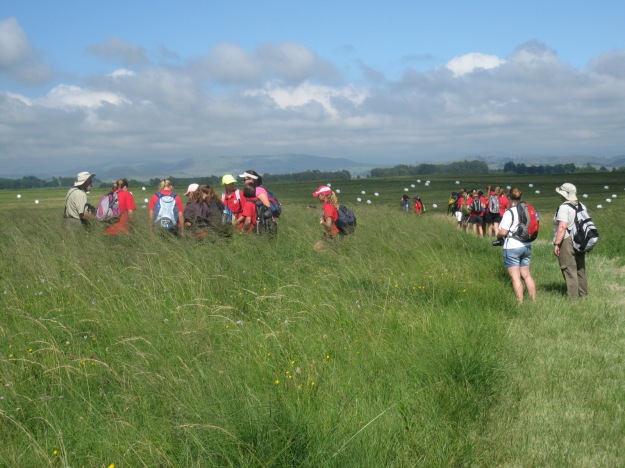 Nkanyiso explained the work of the KZN Crane Foundation before playing fun life skills games to warm up.
Nkanyiso explained the work of the KZN Crane Foundation before playing fun life skills games to warm up. 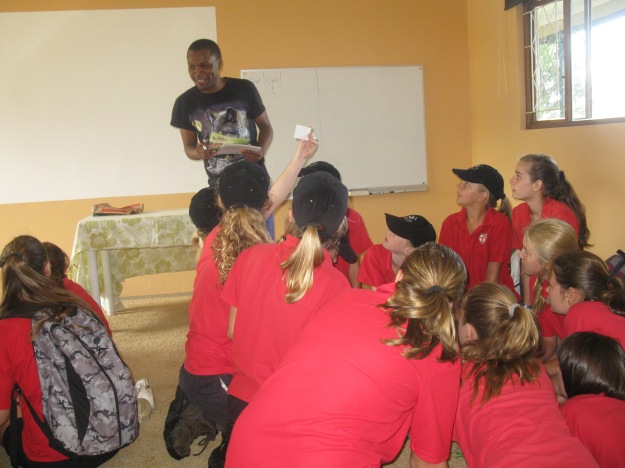 Nkanyiso introduced the Windows on our World Wetland game by asking the learners questions about cranes and wetlands. This game helps learners to develop the skill of identifying and analyzing environmental problems and it shows connections, interdependencies, and cause and effect relationships. Their teacher, Wayne Talbot (who organised the excursion), asked the learners if they knew how an ox bow lake is formed and illustrated by drawing on the board.
Nkanyiso introduced the Windows on our World Wetland game by asking the learners questions about cranes and wetlands. This game helps learners to develop the skill of identifying and analyzing environmental problems and it shows connections, interdependencies, and cause and effect relationships. Their teacher, Wayne Talbot (who organised the excursion), asked the learners if they knew how an ox bow lake is formed and illustrated by drawing on the board.
“I was pleased that the learners knew that wetlands are habitats for cranes and other animals. They enjoyed the game, responded positively and were fully involved, asking lots of questions, which is the sign of interest and learning.” commented Nkanyiso. Nkanyiso showed them the three stuffed cranes and asked them to identify which was which. Learners were able to identify all three cranes and mentioned that the Wattled Crane is their favourite. They enjoyed dressing up in the crane costumes. 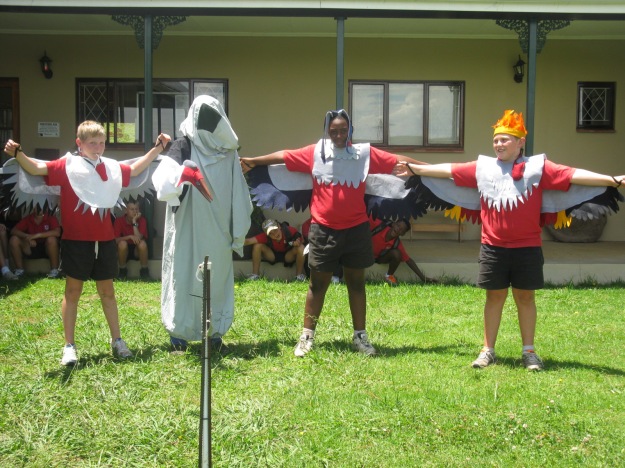 Then it was outside into the sunshine and grasslands.
Then it was outside into the sunshine and grasslands. 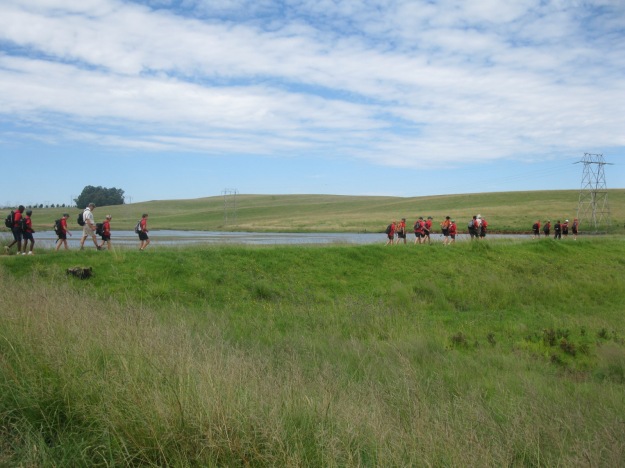 The learners were taken to the Crane Nursery where the second Wattled Crane eggs will be incubated. They were shown the crane domes where the chicks would be taught to forage and fend for themselves by their costumed crane mother. The reason for using the costume is to prevent the young chick from imprinting on people. A crane costume and puppet is worn by the crane mother to disguise human features. This method of rearing chicks is known as isolation rearing or costume rearing. Learners were quite amazed.
The learners were taken to the Crane Nursery where the second Wattled Crane eggs will be incubated. They were shown the crane domes where the chicks would be taught to forage and fend for themselves by their costumed crane mother. The reason for using the costume is to prevent the young chick from imprinting on people. A crane costume and puppet is worn by the crane mother to disguise human features. This method of rearing chicks is known as isolation rearing or costume rearing. Learners were quite amazed. 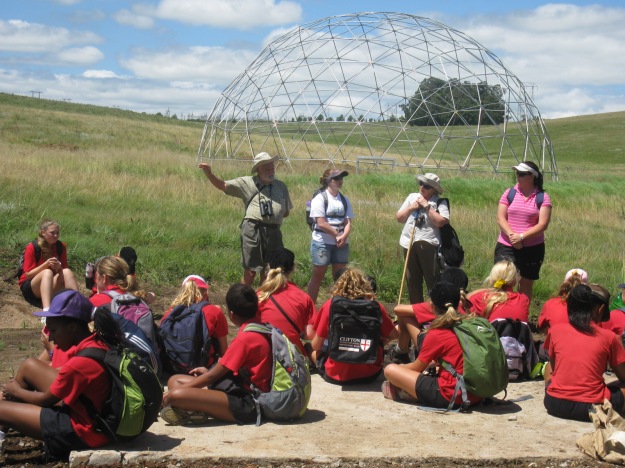 Warwick led a walk in the Reserve and explained about the animals, plants and soils in the Reserve.
Warwick led a walk in the Reserve and explained about the animals, plants and soils in the Reserve. 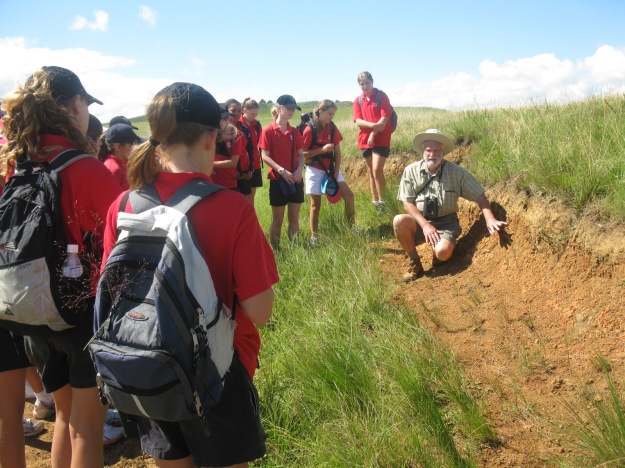 The Watsonia densiflora were flowering beautifully.
The Watsonia densiflora were flowering beautifully. 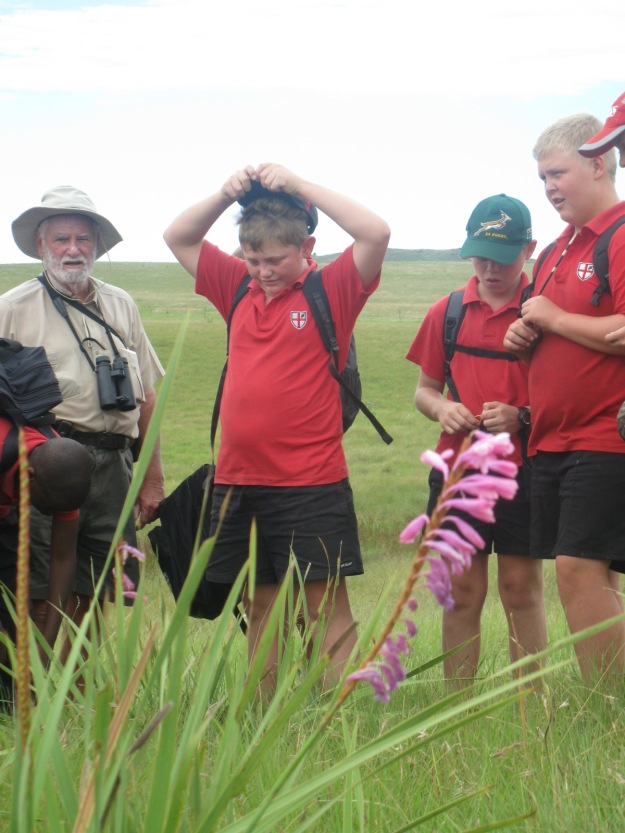 as was the Brunsvigia undulate. There were lots of white storks below the wetlands.
as was the Brunsvigia undulate. There were lots of white storks below the wetlands. 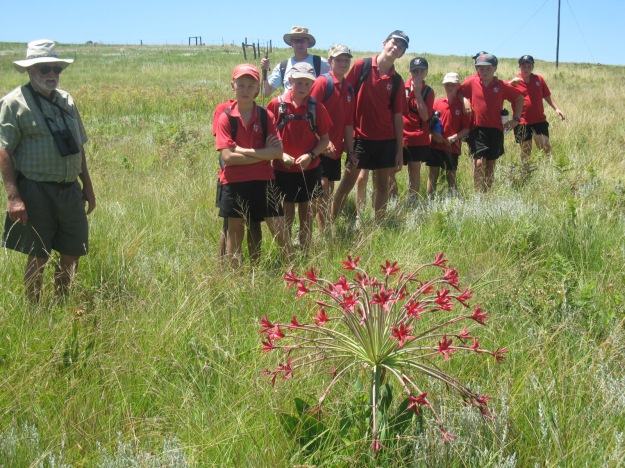 We could hardly believe our eyes when we saw a pair of Wattled Cranes – everyone was very excited! We also saw Reed buck, Amur falcon, Oribi and identified footprints of other animals. All learners and teachers felt that the trips were the great success.
We could hardly believe our eyes when we saw a pair of Wattled Cranes – everyone was very excited! We also saw Reed buck, Amur falcon, Oribi and identified footprints of other animals. All learners and teachers felt that the trips were the great success. 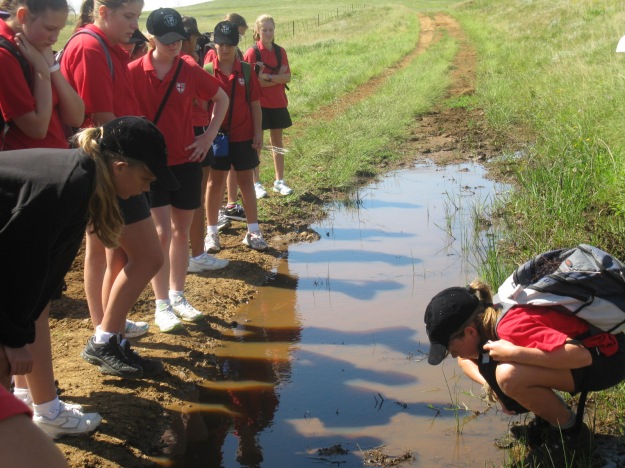 Andrew Ferendinos, Chair KZNCF “On behalf of the KZN Crane Foundation, I would like to thank those teachers and pupils of Clifton School Nottingham Road who visited, not only for coming but also for their generous donation of well over R 1000 towards Ann Burke’s medical costs” Make your donations to: Account Name Ann Burke; Account no.9291220193; ABSA Branch code 632005; Swift code ABSAZAJJ
Andrew Ferendinos, Chair KZNCF “On behalf of the KZN Crane Foundation, I would like to thank those teachers and pupils of Clifton School Nottingham Road who visited, not only for coming but also for their generous donation of well over R 1000 towards Ann Burke’s medical costs” Make your donations to: Account Name Ann Burke; Account no.9291220193; ABSA Branch code 632005; Swift code ABSAZAJJ 